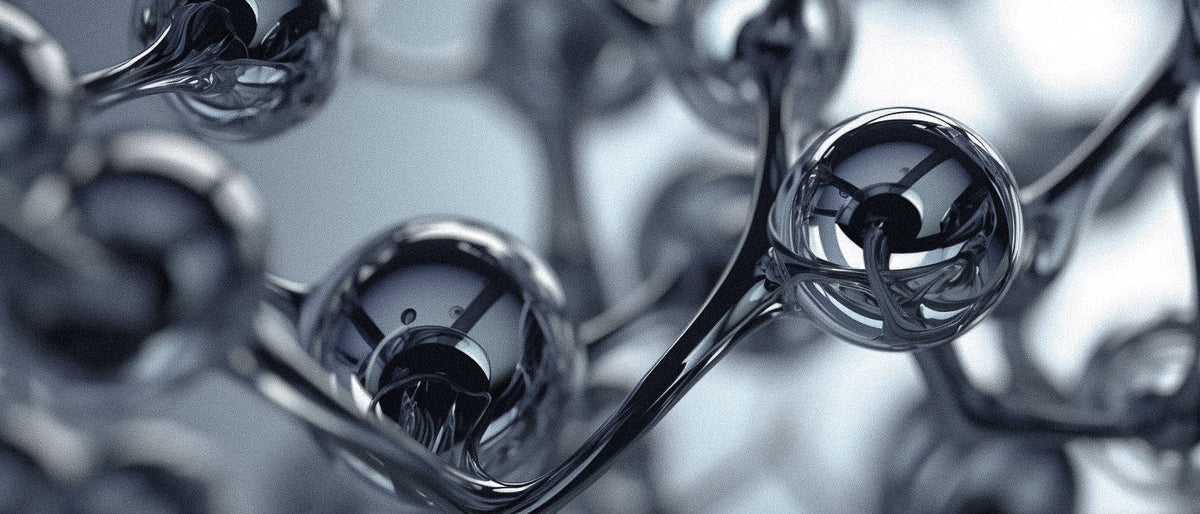
The Invisible Allure: How Pheromone Perfumes Speak the Language of Attraction
|
|
Time to read 12 min


|
|
Time to read 12 min
Have you ever caught someone’s scent and felt an immediate, inexplicable attraction? That moment when a fragrance seems to bypass your conscious mind and trigger something deeper, more primal? You’re experiencing one of nature’s most ancient forms of communication—one that perfumers have been trying to bottle for centuries.
In the world of natural perfume and niche fragrance, few topics generate as much fascination and skepticism as pheromones. These invisible chemical messengers have been incorporated into perfumery for thousands of years, long before science had a name for them. Today, they represent one of the most intriguing intersections of biology, psychology, and artistry in the fragrance world.
Let’s explore the science, history, and application of pheromone-enhanced scents, and discover how these remarkable compounds might be influencing your social interactions in ways you never imagined.
At its core, the concept is deceptively simple: pheromones are chemical signals released by one individual that affect the behavior or physiology of another individual of the same species. In the animal kingdom, these signals govern everything from mating rituals to territorial marking. But what about humans?
The human olfactory system is far more sophisticated than we give it credit for. While we may not consciously process scents with the same precision as, say, a bloodhound, our brains are constantly analyzing airborne chemical signals. When we inhale a natural perfume containing pheromone-like compounds, these molecules take a unique neural pathway.
Unlike other sensory information that passes through the thalamus (our brain’s relay station), scent molecules travel directly to the olfactory bulb and then to the limbic system—the emotional center of the brain. This direct route explains why scents can trigger immediate emotional responses and vivid memories before we’ve even consciously registered what we’re smelling.
The science of human pheromones remains complex and sometimes controversial. Research has identified several compounds of interest:
Androstadienone: Found in male sweat, studies suggest it may influence mood and increase alertness in women
Estratetraenol: Present in female urine, it might affect emotional processing in men
Androstenone: A metabolite of testosterone that some people perceive as musky or urinous, while others find it pleasantly sweet
Androstenol: The “fresh sweat” compound that some research suggests may increase social approachability
What makes the science particularly challenging is that humans don’t have a clearly functioning vomeronasal organ (VNO)—the specialized structure many animals use to detect pheromones. Instead, we likely process these chemical signals through our main olfactory system, which handles all other scents.
This biological reality has important implications for natural perfume creators. Rather than creating fragrances with raw pheromones (which might not be detected anyway), skilled perfumers work with ingredients that either mimic human pheromones or complement their effects.
The use of pheromone-like substances in perfumery predates our scientific understanding of them by thousands of years. Ancient civilizations intuitively recognized the power of certain scents to attract, entice, and enhance desirability.
Era |
Development |
Significance |
|---|---|---|
Ancient Egypt |
Use of animal-derived scents in perfumes |
Cleopatra famously perfumed her royal barge’s sails with musky scents to announce her arrival |
Greek & Roman |
Development of perfumed oils for attraction |
Recognition of certain scents’ effects on social interactions |
Middle Ages |
Perfumes used to mask body odors and enhance natural scents |
Early understanding of how certain scents could complement body chemistry |
Renaissance |
Emergence of perfumery as a sophisticated art |
Incorporation of animal-derived ingredients like civet, musk, and ambergris |
19th Century |
Isolation of specific aromatic compounds |
Beginning of scientific understanding of scent molecules |
1980s |
Introduction of synthetic pheromones in commercial products |
First “pheromone perfumes” marketed specifically for attraction |
Present Day |
Integration of neuroscience and perfumery |
Development of sophisticated niche fragrance formulations based on emotional responses |
Throughout this evolution, certain natural ingredients have maintained their status as the gold standard for creating attraction-enhancing scents. The niche fragrance market in particular has preserved these traditions while incorporating modern scientific insights.
The most effective natural perfume formulations often include ingredients that either mimic human pheromones or enhance our natural scent. These precious materials have been treasured by perfumers for centuries:
Ambergris: This rare substance formed in the digestive system of sperm whales contains compounds that create a sweet, marine, skin-like scent. Its fixative properties help other fragrance notes last longer on the skin, while its own scent adapts uniquely to each wearer’s body chemistry.
Musk: Originally derived from the musk deer’s gland secretions, this powerful ingredient creates a warm, sensual base in perfumes. Modern ethical concerns have led to the development of synthetic and plant-based alternatives, but the original animal musk remains one of perfumery’s most notorious aphrodisiacs.
Civet: Another animal-derived ingredient (now typically synthetic), civet adds a complex, animalic quality to fragrances. In small amounts, it creates a warm, intimate effect that many describe as “your skin but better”—the hallmark of a well-crafted natural perfume.
Jasmine: This seemingly innocent white flower produces indole, a compound also found in human feces and decomposing matter. In the right concentration, indole creates a subtly animalic undertone that makes jasmine one of perfumery’s most sensual floral notes.
Vanilla: Studies have shown that vanilla can trigger relaxation and comfort, potentially making wearers more approachable. Its familiar, comforting scent may lower social barriers and create positive associations.
The niche fragrance market has embraced these ingredients more enthusiastically than mainstream perfumery, which often relies on synthetic alternatives. This commitment to natural materials is one reason why many pheromone enthusiasts gravitate toward artisanal and niche perfume houses.
Do pheromone perfumes work as advertised? The answer requires nuance. The scientific evidence for direct pheromonal effects in humans remains limited, but this doesn’t mean these products have no effect.
The effectiveness of pheromone perfume likely stems from a combination of factors:
Biological Factors: Some ingredients may indeed interact with our olfactory system in ways that trigger subtle physiological responses.
Psychological Effects: Believing you’re wearing an attraction-enhancing scent can boost confidence and alter behavior in ways that make you more attractive to others.
Complementary Chemistry: Quality natural perfume ingredients interact with your unique body chemistry, potentially enhancing your natural scent signature.
Sensory Pleasure: Simply smelling good creates positive impressions and can influence how others perceive you.
The most honest assessment is that pheromone perfumes probably don’t work through the direct chemical-to-behavior pathway seen in other animals. However, they can still influence attraction through more complex psychological and sensory mechanisms.
This reality doesn’t diminish their value—in fact, it highlights the sophisticated interplay between scent, psychology, and social interaction that makes perfumery such a fascinating art.
The best pheromone perfume for you depends on several factors beyond marketing claims. When exploring this specialized corner of the niche fragrance world, consider:
Your Natural Chemistry: Each person’s skin chemistry is unique. A pheromone perfume that works wonderfully on one person may clash with another’s natural scent. Sample before committing to a full bottle.
Fragrance Preferences: The base fragrance still matters enormously. No matter how effective the pheromone compounds might be, you won’t wear a scent you don’t enjoy.
Intended Effect: Different formulations target different responses. Some aim to increase perceived attractiveness, others to enhance approachability or project authority. Be clear about your goals.
Concentration: Higher concentrations aren’t necessarily better. Subtlety is key with pheromone-enhanced fragrances—overwhelming someone’s senses can counteract any positive effects.
Source and Quality: The natural perfume market varies widely in quality. Established niche fragrance houses with transparent ingredient sourcing typically offer more reliable products than those making extravagant claims about guaranteed results.
For women, pheromone perfume formulations often include compounds like estratetraenol and copulins, while men’s versions typically feature androstadienone or androstenone. However, many of the most sophisticated products use proprietary blends that work across gender lines.
The most effective approach is often to choose a high-quality natural perfume from a reputable niche fragrance house that incorporates traditional attraction-enhancing ingredients, rather than products marketed primarily for their pheromone content.
How you apply pheromone perfume significantly impacts its effectiveness. Unlike conventional fragrances that are primarily about projecting scent, these specialized formulations require strategic application:
Target Pulse Points: Apply to areas where blood vessels run close to the skin’s surface: wrists, neck, behind ears, inside elbows, and behind knees. These warm spots help activate and diffuse the scent.
Consider Proximity Zones: Think about how close others typically get to different parts of your body. Reserve more intimate scents for areas that only close contacts will experience.
Layer Strategically: Some enthusiasts recommend applying unscented pheromone products first, then layering a complementary natural perfume over them. This creates a complex scent profile with both conscious and subconscious elements.
Practice Moderation: With pheromone products, less is definitely more. Overwhelming someone’s senses can trigger aversion rather than attraction.
Timing Matters: Apply about 20 minutes before social interaction to allow the fragrance to settle and begin interacting with your skin chemistry.
Consistency Creates Association: Using the same scent consistently allows others to develop positive associations with your unique scent signature.
Remember that even the best pheromone perfume can’t create attraction out of thin air. These products work best as enhancers of existing social dynamics, not magical solutions.
Perhaps the most powerful effect of pheromone perfumes has nothing to do with their chemical composition and everything to do with how they make you feel. This psychological dimension shouldn’t be underestimated.
When you believe you’re wearing something that enhances your attractiveness, several things happen:
Confidence Increases: You may stand taller, make more eye contact, and engage more openly in social situations.
Self-Consciousness Decreases: Worrying less about how you’re being perceived frees you to be more present and authentic.
Positive Feedback Loop: As others respond to your increased confidence, your own sense of attractiveness grows further.
This “placebo effect” isn’t fake or imaginary—it creates real behavioral changes that others can perceive. In many ways, this psychological boost may be more powerful than any direct chemical effect of the fragrance itself.
The most sophisticated niche fragrance creators understand this dynamic and design their scents to work on multiple levels: the conscious experience of smelling good, the subconscious effects of certain ingredients, and the psychological empowerment that comes from wearing something special.
As our understanding of human chemical communication evolves, so too will the art of pheromone-enhanced perfumery. Several exciting developments are shaping the future of this field:
Advanced Neuroscience: Brain imaging studies are providing new insights into how specific scent molecules affect neural activity, emotional states, and social perception.
Personalized Formulations: Some forward-thinking niche fragrance houses are beginning to offer custom blends based on individual skin chemistry analysis.
Ethical Sourcing: The natural perfume industry is increasingly focused on sustainable and ethical ingredient sourcing, developing plant-based alternatives to traditional animal-derived materials.
Integration of Aromatherapy: The therapeutic effects of certain scents are being combined with pheromone research to create products that enhance both attraction and wellbeing.
Consumer Education: As scientific literacy around pheromones improves, marketing is becoming more nuanced and honest about what these products can realistically achieve.
The most promising direction may be the integration of traditional perfumery wisdom with modern scientific insights—creating natural perfume compositions that honor ancient knowledge while incorporating contemporary understanding of how scent affects human behavior.
In our increasingly digital world, the ancient, analog language of scent offers something uniquely powerful. Natural perfume enhanced with pheromone-like compounds connects us to our most primal form of communication—one that operates beneath conscious awareness yet influences our perceptions and interactions in subtle but meaningful ways.
The niche fragrance market has embraced this fascinating intersection of art and science, creating sophisticated compositions that honor traditional ingredients while incorporating modern insights about how scent affects human behavior and perception.
Whether you’re a skeptic or a believer in the power of pheromones, there’s no denying the profound connection between scent and attraction. The most effective approach may be one of curious exploration: sample different natural perfume compositions, pay attention to how they interact with your body chemistry, and notice how they make you feel and how others respond.
In the end, the most powerful attraction enhancer may not be any specific molecule, but rather finding a scent that makes you feel confident, comfortable, and authentically yourself. That invisible allure—the subtle interplay of chemistry, psychology, and personal presence—is something no laboratory can synthesize and no marketing can fake.
Wyatt, T. D. (2015). The search for human pheromones: the lost decades and the necessity of returning to first principles. Proceedings of the Royal Society B: Biological Sciences, 282(1804), 20142994. https://doi.org/10.1098/rspb.2014.2994
Grammer, K., Fink, B., & Neave, N. (2005). Human pheromones and sexual attraction. European Journal of Obstetrics & Gynecology and Reproductive Biology, 118(2), 135-142. https://doi.org/10.1016/j.ejogrb.2004.08.010
Savic, I., Berglund, H., Gulyas, B., & Roland, P. (2001). Smelling of odorous sex hormone-like compounds causes sex-differentiated hypothalamic activations in humans. Neuron, 31(4), 661-668. https://doi.org/10.1016/s0896-6273(01)00390-7
Herz, R. S. (2009). Aromatherapy facts and fictions: a scientific analysis of olfactory effects on mood, physiology and behavior. International Journal of Neuroscience, 119(2), 263-290. https://doi.org/10.1080/00207450802333953
Lundström, J. N., & Olsson, M. J. (2010). Functional neuronal processing of human body odors. Vitamins and Hormones, 83, 1-23. https://doi.org/10.1016/S0083-6729(10)83001-8
Ferdenzi, C., Delplanque, S., Barbosa, P., Court, K., Guinard, J. X., Guo, T., Roberts, S. C., Schirmer, A., Porcherot, C., Cayeux, I., Sander, D., & Grandjean, D. (2013). Affective semantic space of scents. Towards a universal scale to measure self-reported odor-related feelings. Food Quality and Preference, 30(2), 128-138. https://doi.org/10.1016/j.foodqual.2013.04.010
Havlíček, J., Dvořáková, R., Bartoš, L., & Flegr, J. (2006). Non-advertized does not mean concealed: Body odour changes across the human menstrual cycle. Ethology, 112(1), 81-90. https://doi.org/10.1111/j.1439-0310.2006.01125 .